2016 Ford Explorer Vs 2016 Honda Pilot

Remember the 1990s?
It was a time of angst, flannel and boy bands. A decade best remembered for ushering in the wonders of the Internet, allowing us all to bear witness to dancing babies and annoying hamsters. It was also a time where minivans and large body-on-frame SUVs were popular choices for families on the go.
But like overalls, No Fear and L.A. Gear, tastes change and things fall out of fashion. Instead of being pigeon-holed as a soccer mom in a minivan or having to suffer the unrefined, fuel thirsty penalties of a hulking SUV, people wanted a better family-friendly motoring solution.
Get a Quote on a New Ford Explorer or Honda PilotThis led to the rise of the large crossover. Looking like an SUV, with nearly the same capabilities of an SUV, these large three-row vehicles also blend in the practicality and efficiency of a minivan. For 2016, two of the best-selling vehicles in the segment have been overhauled.
First up is the 2016 Honda Pilot that loses its boxy shape in an effort to gain more comfort and better refinement. Taking it on is the 2016 Ford Explorer that receives a less substantial update, but does offer new style and a more luxury trim package.
Platinum vs Elite
That package is called the Platinum and supersedes the Limited trim as the poshest Explorer. A power telescopic steering wheel, dual headrest mounted video screens, dual-pane panoramic sunroof, power flip and fold third row seats and massage front seats are just some of the luxuries included. The Platinum also comes equipped with the 365 hp 3.5-liter turbocharged V6 engine previously reserved exclusively for the Explorer Sport.
But all this kit adds up. As tested, the Explorer Platinum checks in with an as tested price of $55,410 after destination charges. That’s quite the step up from the Pilot Elite’s as tested price of $47,300. And the Honda still includes premium features like a remote starter, active lane keep, adaptive cruise control, rear entertainment system and a dual moon roof.
Granted the Pilot doesn’t come with a fire-breathing turbocharged engine, but the 3.5-liter V6 makes a healthy 280 hp and weighing in at 4,317 pounds, the Pilot is some 570 lbs lighter than the Explorer. Plus, the Elite version of the Pilot ditches the six-speed automatic transmission found in lesser Pilots and uses a nine-speed auto borrowed from the Acura MDX instead.
Power vs Efficiency
But even with more gears and less weight, the Pilot can’t make up for its power deficit. On the road, the torque advantage for the Explorer is apparent. It doesn’t make the Explorer a rocket, but highway merging is never an issue for the Ford, even when loaded with passengers
SEE ALSO: 2016 Ford Explorer Review
The six-speed transmission in the Explorer isn’t as smooth and refined in its shifts as the Honda’s nine-speed though, and there is a bit of a delay when accelerating. A noticeable pause occurs between aggressively hitting the throttle and waiting for the big Ford to kick down a few gears, build boost and race for the horizon. In sport mode this trait disappears, but are owners really going to consistently drive the Explorer around in Sport mode and get even worse fuel economy returns?
I say worse fuel economy because the big, powerful Explorer likes the unleaded. Officially rated at 16 mpg city and 22 mpg highway, I was only able to average 17.7 mpg during my evaluation period. The lightweight Pilot, on the other hand, returned a much more respectable 23.1 mpg observed average. The nine-speed automatic may not add much speed, but it does save fuel.
Handling vs Comfort
I’ve said it before and I’ll say it again: the Pilot is one of the most comfortable crossovers I’ve ever driven. Everything the vehicle does is smooth, fluid and predictable. The Explorer’s ride is not as smooth as the Pilot’s and despite being the quieter overall vehicle, more drivetrain vibrations makes their way into the Ford’s cabin.
But for everything the Explorer gives up in ride comfort, it gains in handling. The Explorer, despite being much heavier, is the more responsive SUV of the two. Even with a variable torque management all-wheel drive system, the Pilot can’t match the moves of the Explorer when the road gets twisty. Plus, the Pilot’s brakes are a bit softer.
Compare Specs
| Vehicle | 2016 Honda Pilot | Advantage | 2016 Ford Explorer |
|---|---|---|---|
| Engine | 3.5 L V6 | - | 3.5 L Turbocharged V6 |
| Horsepower | 280 HP | Explorer | 365 HP |
| Torque | 262 lb-ft. | Explorer | 350 lb-ft. |
| Weight | 4,317 lbs. | Pilot | 4,890 lbs. |
| 2nd Row Legroom | 38.4-inches | Explorer | 39.5-inches |
| 3rd Row Legroom | 31.9-inches | Explorer | 33.3-inches |
| Rear Cargo | 18.0 cubic feet | Explorer | 22.0 cubic feet |
| Fuel Economy (US) | 19 MPG city, 26 MPG hwy | Pilot | 16 MPG city, 22 MPG hwy |
| Fuel Economy (CDN) | 12.4 L/100 km city, 9.3 L/100 km hwy | Pilot | 14.9 L/100 km city, 10.7 L/100 km hwy |
| Fuel Economy Observed | 23.1 mpg | Pilot | 17.7 mpg |
| Starting Price(US) | $30,875 | Pilot | $31,995 |
| Starting Price(CDN) | $37,185 | Explorer | $35,289 |
| Top Trim Price(US) | $47,300 | Pilot | $55,410 |
| Top Trim Price(CDN) | $52,185 | Pilot | $61,439 |
Luxury vs Practicality
But these vehicles are not about cornering capabilities; they’re about the occupant environment. The Pilot feels more like a lifted minivan behind the wheel while the Explorer retains an SUV feel. Sightlines in the Pilot are fantastic, but the Explorer’s aren’t bad either.
The Explorer offers the better seating position, as long as you don’t mind a bit of extra built-in lumbar support. I also prefer the Ford’s steering wheel in terms of look and feel, and unlike a lot of wheels with wood inserts, the Explorer’s actually heat up along with the rest of the wheel.
SEE ALSO: 2016 Honda Pilot vs 2016 Kia Sorento
The interior design and quality edge goes to Ford which isn’t much of a surprise for a vehicle costing some $8,000 more. But family-friendly practical points are won by the Pilot with its giant center storage bin, built in window sunshades and second row inboard arm rests for the captains chairs. Yup, $55,000 and the Explorer doesn’t come equipped with a second armrest for second-row passenger bucket seats.
Controls in both vehicles are well placed and easy to use; except for the infotainment systems, of course. Picking between HondaLink and MyFord Touch is like choosing which straight cut oatmeal to have for dinner. Both will do the job, but the experience isn’t all that enjoyable.
Space, the Final Frontier
Even though it is much lighter, the Pilot is nearly the same size as the Explorer, coming up less than three-inches shy in total length. Interior dimensions also come up a bit short compared to the Explorer with the Pilot’s second row offering 38.4-inches of legroom and the third row 31.9 inches compared to the Ford’s 39.5 inches in the second row and 33.3 inches in the third.
Passengers seated in the middle row of the Explorer will find more comfort than those in the second row of the Pilot. In the third row, things flip flop though, as the Pilot’s seats are more accommodating and easier to access thanks to the single button fold and slide second row seats. Plus, three people can sit in the back of the Pilot compared to just two in the Explorer.
SEE ALSO: 2016 Ford Explorer Platinum Review
In terms of cargo space, the see-saw battle continues. With the rear seats up, the Explorer can swallow 21 cubic feet of gear compared to the Pilot’s 18 cubic foot capacity. But fold both rows of seats down and the advantage swings back to the Pilot’s favor with 108.5 total cubic feet behind the front row compared to 81.7 cubic feet in the Explorer.
The Verdict: 2016 Ford Explorer vs 2016 Honda Pilot
The Pilot and the Explorer are equally matched in many regards while still being completely different in others. When the sum of the parts are added up, both packages are wholly attractive and it’s easy to see why both are best sellers.
But which one is better?
Tough call, but a large crossover needs to be an easy-to-use, passenger friendly transportation device first and foremost, even when outfitted with every toy in the box. Here the Pilot holds the advantage. Comfortable, practical and as easy to drive as an Accord, the Pilot makes the most sense in large, premium three-row crossovers. A lower as tested price and better fuel economy is just icing on the cake.
2016 Ford Explorer, 2016 Honda Pilot
LOVE IT
- Engine power
- Interior style
- Well equipped
- Spacious
- Comfortable ride
- Fuel Efficiency
- Spacious
- Practical
LEAVE IT
- Weight
- Fuel economy
- Not as soft of ride
- Price
- Not as powerful
- Second row not as comfortable
- Less cargo space

A 20+ year industry veteran, Mike rejoins the AutoGuide team as the Managing Editor. He started his career at a young age working at dealerships, car rentals, and used car advertisers. He then found his true passion, automotive writing. After contributing to multiple websites for several years, he spent the next six years working at the head office of an automotive OEM, before returning back to the field he loves. He is a member of the Automobile Journalists Association of Canada (AJAC), and Midwest Automotive Media Association (MAMA). He's the recipient of a feature writing of the year award and multiple video of the year awards.
More by Mike Schlee






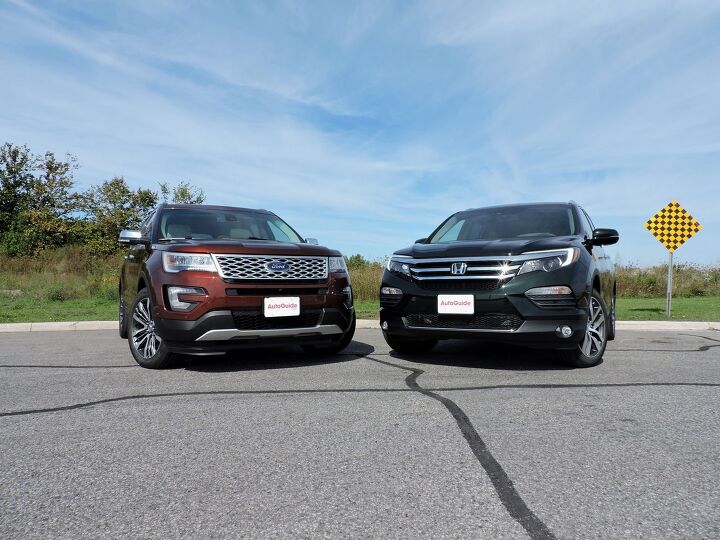
















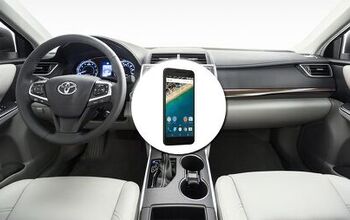



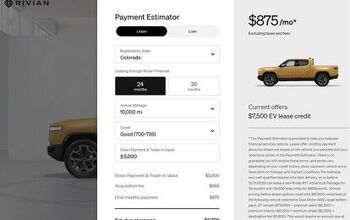
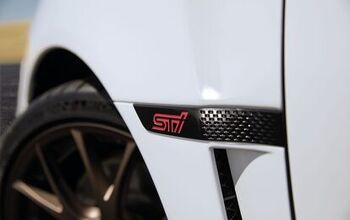
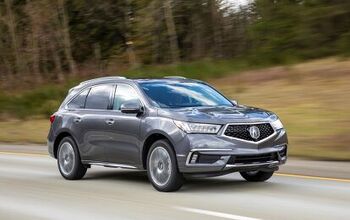

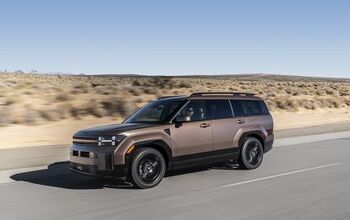


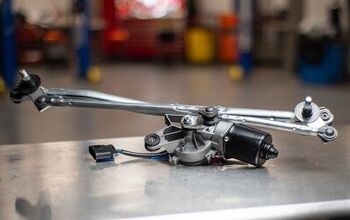
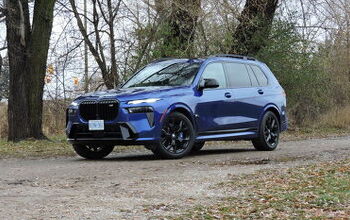

Comments
Join the conversation
biggest problem with the explorer is the horrible seating position and outward visibility. sitting low and far behind a tall dashboard and thick A pillar, it makes for a a vehicle thats far from comfortable or easy to drive,.. especially when compared to the pilot, at the other end of the spectrum, offers excellent driving position and visibility. ... that and all the reasons mentioned in your own article's conclusion, .. its far from a close call imo
Having just compared these two at a new car expo, I have to say that I'm torn. I haven't driven both of them, but I have to say that I really liked what the Explorer had to offer compared to the Pilot. It was comfortable and seemed to have all the right space. The problem continues to be that second row. I need three seats back there or else forget it. The third row is pretty useless on both cars if you are taller than 3 feet, so I don't even know why they offer it. But, with that being said, I felt the Pilot had more room in the back with the third row open than the Explorer did. Both in leg room and in storage behind the seat. But since that third row isn't necessary for me, I think I'll go for a smaller SUV. The RDX or CRV are perfectly suitable for my needs. The only reason you would need a bigger truck like these is if you are towing something (which I'm not). I've got my V6 Rav4 if I need to pull a tent trailer (which I have done), but this next vehicle is the grocery getter and my wife's primary mode of transportation with the kids. Gotta have room in the back and that bench seat in the middle...